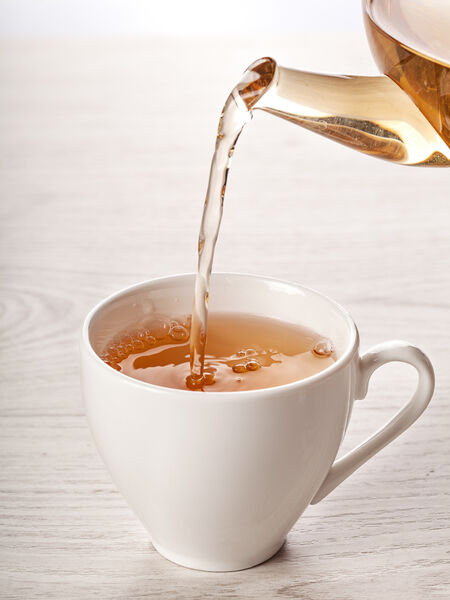Tea Brewing 101 for Shops and Cafes

An old adage among tea sages is that no one lives long enough to learn everything there is to know about tea. However, there are some basics that anyone can learn about how to brew a great cup of tea and we invite you to adapt these tools and techniques. You’ll not only enjoy the process more, you’ll sell more tea!
6 ESSENTIAL TEA BREWING TOOLS:
Knowing the true size of your brewing vessel and accurate tea leaf measurements are the two most critical elements needed to brewing the perfect cup. After practicing with these tools and techniques, you’ll be able to eyeball the process, but until then, measure tea and water every single time.
1. Gram Scale - Use one to weigh tea with the basic ratio of 3 grams of tea leaves for 8 oz. of water. NOTE: Bigger leaves often weigh LESS by volume than smaller tightly-rolled teas, so a food scale to measure in grams instead of measuring in ounces yields a perfect cup every time. Too much tea is wasteful and makes the cup bitter; using too few leaves makes a weak cup that cheats the customer of a lovely tea-drinking experience.
2. Liquid Measuring Cup - helps you measure how much liquid your cups, mugs, or teapots hold. Dinner cups range from 5 to 8 oz.; mugs from 8 to 12 oz. or more, so it’s important to know how much liquid your cup holds before you measure out your tea for best flavor in the cup. Teapots range from 4 oz. to 24 oz. so measure, measure, measure. Just follow the basic ratio (3 grams of tea leaves/8 oz. of water) and adjust the amount of leaves accordingly.
3. Spring Water - Locally-sourced spring water is best, but tap water (filtered with a calcium carbonate cartridge) works well, and helps achieve the right balance of minerals to impact the extraction of polyphenols, avoid unpleasant astringency (and improve the taste of the tea).
4. Temperature-controlled water kettle or hot water tower - This is a wise investment for making the perfect cup which is the key to selling tea. This kettle takes the guesswork out of figuring the true temperature of the water, is reliable, and efficient. Until you get one, you can heat water in an open saucepan, and measure the water temperature with an instant read thermometer. This allows you to “see the bubbles” as they grow in the saucepan, teaches you the visual signals of when the water temperature changes, and after some practice, you can dispense with the thermometer. ALTERNATIVE: Boil the water in a traditional stovetop kettle, then brew the tea if using puerh or most blacks. To brew oolongs, greens, whites or yellows, allow the boiled water to cool at least five minutes then measure temperature. It should be in the range suitable for greens to oolongs. Allow it to cool even longer as necessary. NOTE: If your hot water tower only has one temperature, you can either add ice cubes or cool water to bring down the temp for delicate green, white, and oolongs, and steep herbals, darker oolongs, and black teas a little longer to compensate.
5. Brewing Vessels:
Teapots with or without infuser baskets.
Gaiwans for traditional Asian gong fu service.
Teacups or mugs with infuser basket for single serving.
To-go cups with paper filters
6. Timers: These are wonderful tools in the kitchen or at the table to time the brew exactly. Easy to set and it rings when done!
BREWING PROCESS:
Water temperature is critical for the best tasting tea. In general, the lighter the processing, the cooler the water needed and the shorter the brewing time. If the water is too hot, some teas will become bitter or overly astringent. If too cool, the cup will be weak or even flavorless. Most teas do NOT need boiling water (212°F) with the exception of pu erh and most black teas. Follow your tea wholesaler’s suggestions for tea quantities, brewing times, and water temperatures. Otherwise, follow these guidelines:
-White tea such as Silver Needle or White Peony can be brewed for 3 minutes at 180°F.
-Green tea such as Sencha can be brewed at 165°F or Dragonwell at 180°F for 2-3 minutes.
-Pouchong or green oolong generally 180-195°F for 3 minutes.
-Dark oolong such as Ti Kwan Yin, like 195°F for 3 minutes or longer to taste.
-Black tea such as Keemun, Ceylon or Assam do well with 205-212°F for 3-5 minutes.
-Pu erh should always be brewed with boiling water, (212°F) for 5 minutes or longer, to taste.
Herbals (anything that is not true tea leaves): Brew 3-5 grams in 8 oz. of boiling (212°F) water for 5-7 minutes or to taste. Best served plain or with honey.
